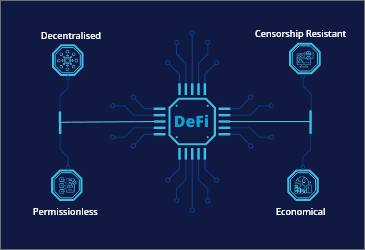IT IS YOUR MONEY
Real-World Asset Funds in DeFi Protocols
Real-world asset (RWA) funds are now integrated into DeFi protocols, enabling users to earn yields backed by tangible assets like real estate, invoices, and bonds. Platforms like Centrifuge, Maple Finance, and Goldfinch connect physical-world cash flows to decentralized lending pools. This convergence brings stability and credibility to the DeFi ecosystem.

The Bridge Between DeFi and Tangible Value
Decentralized Finance (DeFi) has offered high yields, but often backed by volatile crypto assets or unsustainable incentive models. The integration of real-world asset (RWA) funds introduces stability by anchoring returns to actual economic activity—rental income, loan repayments, or corporate revenue.
RWA funds in DeFi function as collateralized lending pools. Institutions or borrowers pledge tokenized assets—such as property deeds, trade receivables, or private debt—which are verified and deposited into smart contracts.
Liquidity providers earn interest funded by real-world cash flows, not algorithmic incentives.
This hybrid model reduces systemic risk while expanding DeFi’s utility beyond speculation.
How RWA Funds Operate in DeFi Ecosystems
Take Centrifuge, a leading RWA protocol. It allows businesses to tokenize invoices or real estate leases and use them as collateral to borrow stablecoins from DeFi pools like Aave or MakerDAO.
Investors supplying liquidity earn yields of 6–10%, backed by legally enforceable debt obligations. Risk is mitigated through over-collateralization and credit assessments conducted by trusted “gatekeepers.”
Similarly, Maple Finance enables institutional borrowers—like fintech firms or hedge funds—to secure unsecured loans from decentralized pools based on off-chain credit analysis. Smart contracts automate repayment distribution.
Goldfinch takes a peer-to-peer approach, allowing global lenders to fund emerging market SMEs. Repayments are verified via third-party data and distributed on-chain.
Real-World Performance and Institutional Trust
As of 2024, Centrifuge has facilitated over $600 million in RWA-backed loans, with default rates below 1.5%. Its integration with MakerDAO allows the protocol to hold tokenized U.S. Treasury bonds as collateral—marking a major step toward real-world backing for decentralized stablecoins.
Maple Finance has issued over $1.8 billion in loans with a recovery rate exceeding 98%, proving that creditworthy borrowers exist outside traditional banking.
Goldfinch has funded over 100 businesses across Latin America and Southeast Asia, offering yields of 8–12% with strong repayment performance.
These platforms demonstrate that DeFi can be both decentralized and grounded in real economic value.
Benefits: Yield Stability, Diversification, and Global Access
RWA-backed DeFi funds offer predictable, non-correlated yields—performing independently of crypto market swings.
They enhance portfolio diversification, allowing investors to gain exposure to private credit, real estate, and trade finance through a single wallet.
Additionally, they promote financial inclusion, enabling underserved businesses to access global capital while giving retail investors access to institutional-grade assets.
The Future of Hybrid Finance
As more RWAs enter DeFi, we’re witnessing the rise of “TradFi+DeFi” ecosystems—blending regulatory compliance with blockchain efficiency.
Asset managers, banks, and central banks are exploring tokenized fund integrations, signaling broad legitimacy.
The future of DeFi isn’t purely digital—it’s anchored in the real economy, delivering sustainable returns through transparent, automated finance.
To discover how RWA-backed DeFi funds can stabilize and grow your portfolio, visit DigitalAssets.Foundation and receive a FREE consultation.

More News
© 2025
